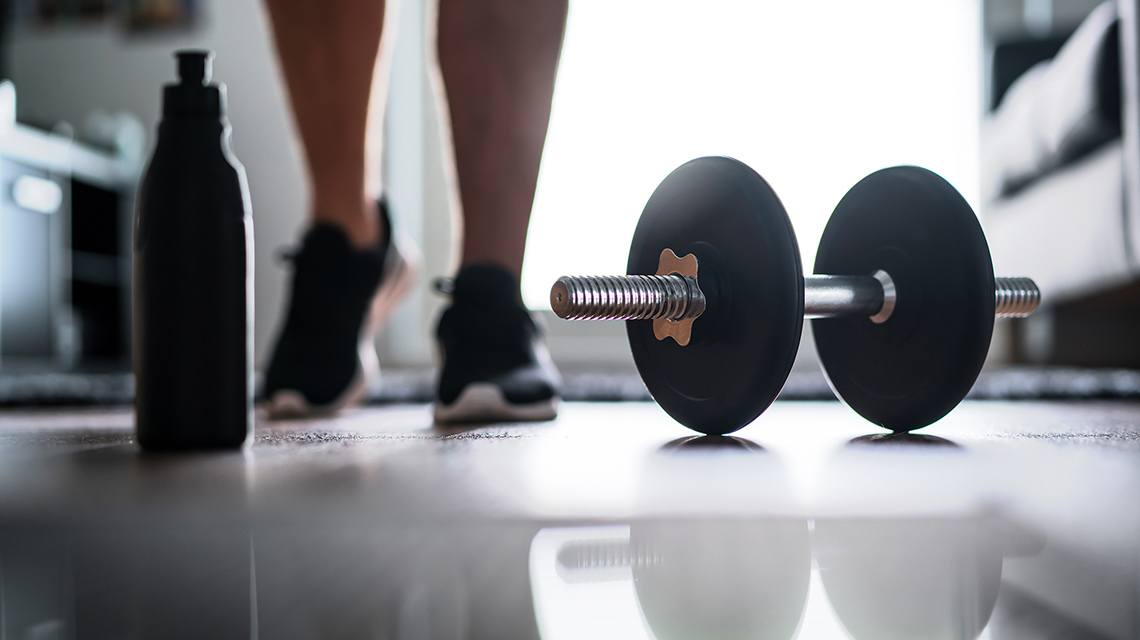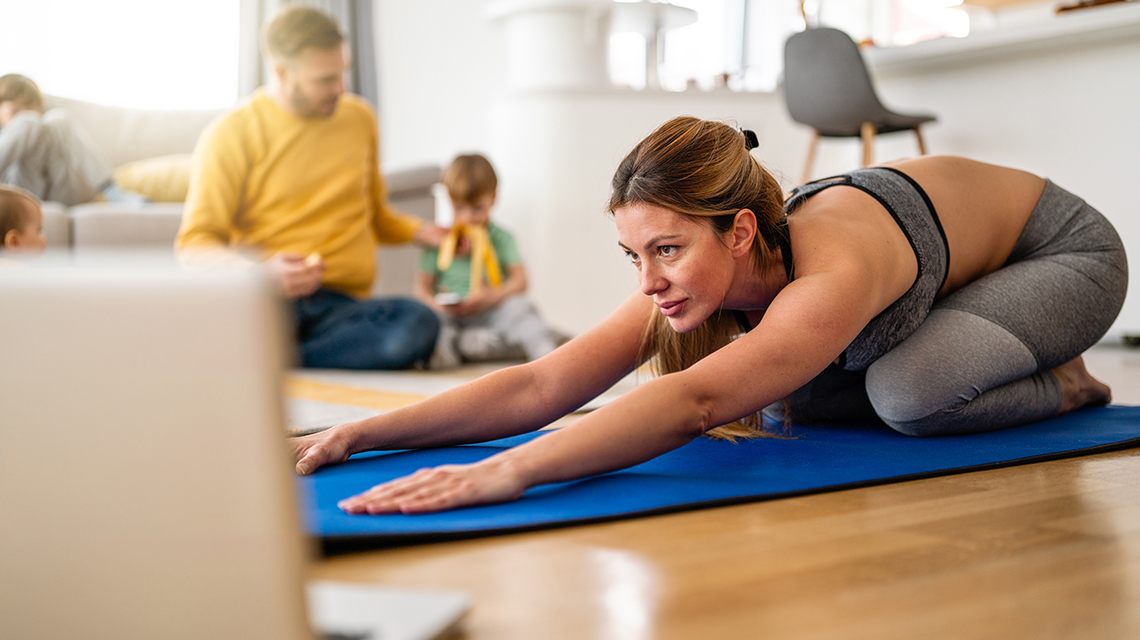
Back Pain Management
Reboot Your Routine
October 15, 2021Reboot Your Routine
October 15, 2021Sad fact of the day: at least 80 % of us will develop back pain at some point in our lives. If you thought it best to avoid movement when experiencing this type of discomfort, you’re not alone: many people think bed rest is best. And yes, in some cases back pain can be due to an acute injury or underlying condition that requires medical advice and/or backing off from exercise.
However, for most of us keeping active aids in recovering from, and preventing future, back pain. While you should definitely avoid activities that further aggravate the situation, in general our spines are very strong and designed to move. The key to managing back pain is to understand what imbalances in our bodies are creating it in the first place and then reboot our routines to maintain proper health.
Why We Develop Back Pain
We’ve been undergoing muscular training from birth (and even before). Our spines develop their natural curves as we learn to crawl and eventually walk. The whole time our muscles are growing to support this process. As children we were constantly running, jumping, reaching, and squatting. Then we take these amazing little bodies and put them behind school desks, sitting and slouching every day during key periods of growth.
Sitting so much alters our flexibility and strength. As we move into adulthood we fall into habits, performing repetitive movements that perpetuate the imbalances created from sitting so much. We end up stretching what is already flexible and strengthening what is already strong. Even the healthiest of individuals can develop physical (and psychological) patterns that put their spines in jeopardy. Below are some handy hacks and essential exercises to begin managing your back pain.
Spinal Suggestions
Engage (with) your Core
The core muscles are designed to protect and stabilize your spine and coordinate movement. For managing your back pain it is essential to get in touch with these abdominal muscles. And no, we’re not talking sit-ups: there’s a widespread misconception that having a six-pack is synonymous with having a strong core. But there are many more muscle groups besides the rectus abdominis (six-pack muscles) that make up your core including internal and external obliques (helping with twisting), transverse abdominis (the deep layer that acts as a kind of corset), and erector spinae (helping to straighten the back).
Vary Your Movements
Become more mindful of the movements you repeat every day and think of different ways you could engage with them. This can be as simple as getting out of bed on the opposite side or ensuring that you squat rather than bend over to pick something up. This will help you begin identifying specific patterns of movement you have developed and start to balance out your potential asymmetry.
Sleeping Support
Improve your nighttime posture and you will probably thank us in the morning. You can try supporting the curve of your neck with a pillow and place one between the knees with another between the ankles. This position keeps the hips, pelvis and spine in better alignment.
Relax & Stay Positive
This may be the last thing you want to hear, but muscle tension from worry and stress may actually be making your back pain worse. Throughout the day you can try scanning your body to check in with the tension levels. When you’re feeling tense take a big belly breath – inhaling to lengthen and exhaling with a little resistance. This has a double effect of turning on the core muscles and communicating awareness of their position to the brain while releasing stress.
Increase Your Activity Levels
Regular activity keeps your spine strong and healthy and may be the most effective and cost-efficient way to treat or prevent back pain. Especially low-impact activities such as walking, swimming, yoga, and pilates. Postural awareness and regular sustainable exercise is key to managing symptoms and preventing further damage from occurring.
7 of the Best Exercises for Back Pain
Simple balancing exercises will help manage your back issues. Stretching and strengthening are two of the best ways to ease the pain. In terms of target groups, you’re going to focus on the core muscles, hip flexors (which help support proper posture) and the glutes (which support the back while walking, standing, and sitting).
Strengthening weak muscles is really challenging. Our brains are in great communication with our strong muscles, but not so much with our weaker muscles. Therefore gentle and precise exercises for the weak muscles help them to not be overpowered by their stronger counterparts.
________
a) Lie on the ground, bend your knees with your feet on the floor, hip-width distance apart
b) Press into your feet, raise your hips until your body is a straight line from shoulders to knees
c) Squeeze the buttocks, hold for a few breaths
d) Eventually lower down to the ground and take a rest
e) Repeat 5-10 times for one set
________
a) Lie on your back with knees bent and feet on the floor
b) Raise one knee and hug it into the chest
c) Tighten your abdominals and press your spine into the ground
d) Hold for a few breaths, release and swap legs
e) After a few times on both sides, hug both knees into your chest at the same time
________
a) Lie on your back, knees bent and feet on the floor
b) Keep shoulders on the ground and roll bent knees to one side
c) Hold for some breaths until you feel the tension release
d) Return to start position and swap sides
________
a) Lie on your back, knees bent and feet on the floor
b) Gently arch your lower back, pushing out the stomach and stabilizing your core
c) Hold for a few breaths and then relax back to neutral
d) Flatten back and pull your belly in towards the floor, feeling your abdomen and glutes tighten
e) Hold for a few breaths, then relax to neutral
f) Repeat 15-20 rounds
________
a) Get into position on your hands and knees
b) Slowly round your back towards the ceiling, pulling your belly button in toward the spine
c) Relax and let abdomen sink towards floor, arching the spine and looking up
d) Repeat a few rounds on your breath
_______
a) Lie on your belly, stretching both arms overhead and legs behind along the ground
b) Engage your core and lift your arms and legs up off the ground stretching them and lifting
c) Keep head in neutral, looking down
d) Hold for 3 breaths, and return to starting
e) Repeat 5-10 times
________
a) Lie on your belly, stretching legs back with feet slightly wider than hip-width
b) Bring your elbows under your shoulders, forearms and palms pressing into the ground
c) Press into your forearms and slowly lift chest and head off the floor
d) Keep looking forward. Breathe into your core muscles and slightly tense your abs to support the lower back muscles - release
e) Hold for a few breaths and then gently lower down
f) Repeat a few rounds



